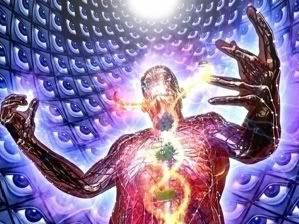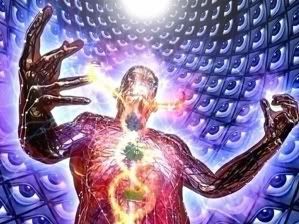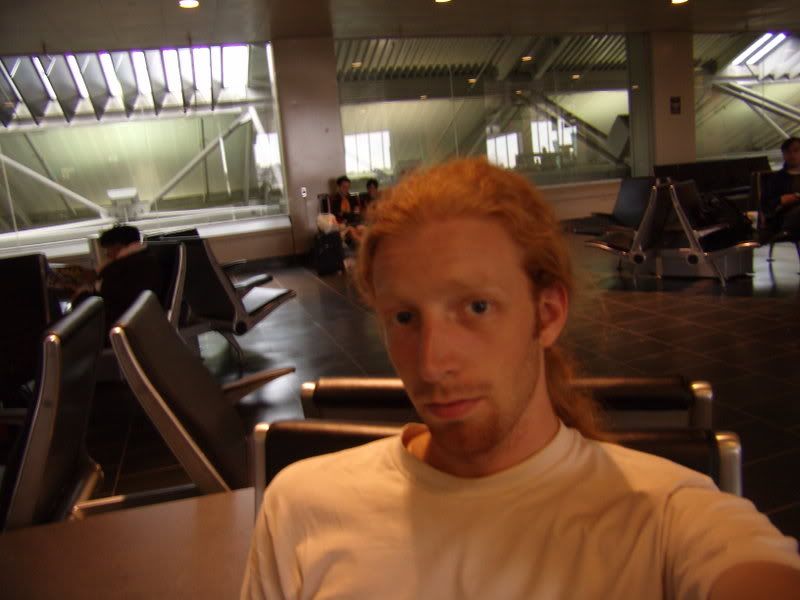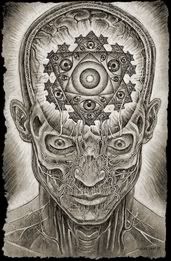The State of Modern Science: Fear, Corruption, and the Weight of the World
Less than a month ago Dr. Hwang Woo-Suk was the leading stem cell researcher in the world and the pride of Korea. He was a national celebrity and an inspiration to people suffering from currently incurable diseases and irreparable injuries around the world. There exist numerous accounts of these less fortunate following his work almost religiously, checking his progress daily in hopes that Dr. Hwang would win the race against their advancing ailments. He was also a worldwide icon for scientific progress, daring to dabble in the most taboo of all fields, yet producing results whose utility could not be ignored. He endured constant attacks from the memetic descendants of those cowards who opposed drugs and vaccination in their time, slandering his morality and chastising him for mimicry of some omnipotent. Even so, he continued his work undeterred, fighting for those who depended on him and upholding the dignity of science.
But in early December, Dr. Hwang was pressured to resign as head of the World Stem Cell Hub and all other official posts, saving only his professorship at Seoul National University. The allegations concerned unethical acquisition of the human eggs used in his research. On December 23, Dr. Hwang offered his resignation from Seoul National University in the face of rising controversy. Now, in addition to ethical concerns, Dr. Hwang’s scientific merit has come into question as colleagues have accused him of intentional fabrication of data. However, Dr. Hwang has repeatedly cited mix-ups and oversights, holding to the fact that his results are legit and claiming the ability to reproduce them in only ten days.
Now before I really get into the details and minutiae, I would like to introduce my reasons for taking interest in this issue in the first place. While the results of official investigations into the matter are pending, we are left to guess between two possibilities. In the first, Dr. Hwang reproduces all results and clears his name; we can only hope. In the second, which seems at the moment far more likely, he is found guilty of fabrication and scientific misconduct. The latter is my interest because it holds within it two broad possibilities of its own, and I’m afraid no cut and dry investigation will turn up on this point. If Dr. Hwang is found guilty of fabrication, one has to wonder whether this is the literal truth, through malevolence or negligence, or if he has been forced out of all positions of influence by some underhanded advance of his moral adversaries.
For those of you at least somewhat familiar with religion’s willingness to lower the bar (See practically anywhere else on this site), this will not seem such a far-fetched idea. It should, rather, be very unsettling. Dr. Hwang’s research walks the line between the worlds of religion and science, its boundaries largely dependent on a rigorous definition of what it means to be alive: what gives life and when? Further, it is a potential gateway for new technologies in cloning and genetic manipulation. Dr. Hwang is, for all intents and purposes, a modern day Copernicus. When I think of a scientist of Dr. Hwang’s influence being forcibly removed from all posts, sealed from his own laboratories, having all data seized, and having necessary supplies cut off, I get visions of Giordano Bruno burning at the stake; a slippery slope right back to the Dark Ages.
On the other hand, if Dr. Hwang has intentionally fabricated data, then science will be seriously damaged. Although better for having sniffed out and excised the problem by that self-correcting hallmark of science, our ability to trust any new and staggering development in the future will be fundamentally weakened. There have always been hacks willing to twist words and skew statistics in order to prey on some profitable lapse in self-esteem. But those are hacks and their lies are restricted to the realm of pamphlets and infomercials. There is a real problem when a world-renowned scientist, holding numerous degrees from an accredited institution, leading the charge into a new and ill-defined field of study, knowingly and willingly fabricates evidence and draws false conclusions. It is a larger problem when this fabrication is published in the most trusted scientific journal in the world and subsequently read and believed by some thousands of honest researchers.
Neither case is desirable here, but the detriment of each sparks a distinct set of concerns. It is certainly worth trying to see which of these two evils we are up against. Why did Dr. Hwang Woo-Suk, arguably the most forward looking man of our time, a man who might later be accredited with having saved billions of lives, feel that his only viable option was to abdicate all positions of influence and forfeit his life’s work?
In 2004, Dr. Hwang submitted a revolutionary paper to Science Magazine. His research group had created the first ever pluripotent human embryonic stem cells from a cloned human blastocyst. What this means is that the nucleus of a non-reproductive cell was taken from a women’s body and implanted into one of her unfertilized eggs. The egg was then cultured in the laboratory until it formed a blastocyst, an early cell mass. If the blastocyst were allowed to develop it would eventually form a fetus that is genetically identical to the female donor: a clone. Instead, Dr. Hwang’s group extracts pluripotent stem cells from the early cell mass to use for regenerative medical treatments. Pluripotent simply means that the cells have not yet ‘chosen’ which type of body tissue they will be a part of (bone, liver, skin, brain, etc.). Because of this pluripotency, these cells can theoretically be administered to a great many different damaged areas and, taking cues from their environment, develop into the appropriate type of cell, thus regenerating the damaged tissue. The development of pluripotent stem cells, however, was not the notable achievement of this paper; it was the cloning technique that was novel.
In 2005 Dr. Hwang scored again, publishing a second groundbreaking paper in Science. This time he had gone one further, implanting nuclei from the cells of different people into the women’s donated egg, not her own. The success of this technique was immediately promising because it meant that a person suffering from a debilitating disease, a male even, could give skin cells, have them implanted into a donated egg, and recover pluripotent stem cells that were a perfect genetic match for his body. In the paper, Dr. Hwang claimed to have successfully created 11 stem cell lines specifically tailored to diseased patients. A series of high-resolution microscope photographs and a method of DNA ‘fingerprinting’ evidenced the claim.
While some regarded these achievements with accolades, others grew fearful of the implications. The ubiquitous comment from Dr. Leon Kass, chairman of the President’s Council on Bioethics, was “whatever its technical merit, this research is morally troubling: it creates human embryos solely for research, makes it much easier to produce cloned babies, and exploits women as egg donors not for their benefit.” Richard Doerflinger, director of pro-life activities at the United States Conference of Catholic Bishops, said, “Up until now, people were beginning to wonder whether human cloning for any purpose was feasible at all. This development makes it feasible enough to be a clear and present danger.” Hence my aforementioned suspicions.
In truth, Dr. Hwang has never made any attempt to clone a human being and has never insinuated that he might. What he creates, though a potential clone, is an early cell mass of pluripotent cells. These cells have not yet ‘decided’ to form even the most basic functional parts of a human body. Further, it is my understanding that the process of removing the desired cells from the cell mass renders it nonviable. Nevertheless, those who oppose this research care little for such trivia so long as they can perform some trick of semantics resulting in one of those key words sure to insight political jihad. ‘Clone’ happens to be one of those words and recently, by bunk association, so is ‘stem cell.’
Sophistry aside for a moment, here’s the real controversy. The eggs used for Dr. Hwang’s 2004 paper were donated, mostly by South Korean women. Last month it was discovered that two of Dr. Hwang’s researchers had donated their eggs and that the procedures were paid for with Dr. Hwang’s research funds. Dr. Hwang claims that he was unaware of these donations until after the eggs had been used and, when questioned by Science, lied about the origins of the eggs in order to protect the women’s confidentiality. In addition, payment for the donation of eggs is illegal in South Korea. However, an investigation by the Institutional Review Board on Human Subject Research and Ethics concluded that payment to donors did not become illegal until January of 2005, well after the publication of the 2004 paper. Further, the investigation showed that Dr. Hwang’s group had not coerced the women or violated any of the established ethical guidelines applicable to the donations. His claim of ignorance is also quite plausible because Dr. Hwang is, by law, not allowed to inquire about the origins of his donated eggs. Nevertheless, Dr. Hwang’s white lie to Science magazine cost him all of his official posts.
With the publishing of the 2005 paper came the real trouble. Shortly after it’s submission and peer review, an editorial bedlam ensued as microscope photographs of the cells were swapped, relabeled, excluded, resubmitted, and altogether jumbled beyond comprehension. On December 13, co-author Dr. Gerald Schatten of the University of Pittsburgh requested that his name be removed from the paper stating, “my careful review and evaluations of published figures and tables, along with new problematic information, now casts substantial doubts about the paper’s accuracy.” He also said the he had “received allegations from someone involved with the experiments that certain elements of the report may be fabricated.” Later, a member of Dr. Hwang’s laboratory confessed that he was told by Dr. Hwang to make data for the 11 reported stem cell lines from only two lines in the group’s possession.
These accusations led to an investigation by the Seoul National University Investigation Committee. The investigation committee reported to Science on December 23, stating that the results of Dr. Hwang’s 2005 paper suffered from substantial research misconduct. For nine of the eleven lines, Dr. Hwang had apparently sent two samples of DNA from his patients to be tested, claiming that one of them was a lab cultured, genetically identical stem cell line. Further testing on the remaining two lines showed that they were not actually patient specific stem cells. The microscope photographs turned out to be photographs of two cells doctored to look like eleven distinct cells. The investigation has now moved onto Dr. Hwang’s 2004 paper as well as a paper he submitted to Nature claiming to have cloned a dog for the first time in history.
Dr. Hwang responded to all of this at a press conference on December 16. He admitted several irrevocable mistakes, mix-ups with results, and incidents of contamination in the cell lines. He never denied or confessed fabrication, but holds that the 11 cell lines were made and that he can duplicate the results in ten days. He also claims that some of his cell lines were stolen and replaced with lines from MizMedi hospital, accusing a former laboratory member now working with MizMedi. Investigations into this accusation are still pending.
On the up side of all of this, I can see no hand of religion in it without subtlety unbecoming of fundamentalists. All accusations and investigations have been forwarded by legit scientific committees and backed with concrete proof. My worst fear, at least, seems to be absent. The down side is that a respected scientist has fabricated revolutionary results. But with this answer comes a new question: did the patient specific stem cell lines ever exist? Was there a reason, not necessarily a good one, but some logical reason that one paper had to be fabricated? Or, was the whole thing, from the first experiment on, all a hoax? There are a few reasons that this last suggestion seems unlikely and these will require a bit of background.
Hwang Woo-Suk grew up impoverished in South Korea. He worked on a farm to put himself through veterinary school at Seoul National University. Practically on a whim, he decided to attempt to clone a better cow for farm applications. So he trained in Theriogenology (the science and practice of animal reproduction), receiving a Ph.D., and proceeded to clone several cows and pigs. Seeing the potential applications in medicine, he decided to start working on human stem cells and had immediate success applying his animal cloning techniques. Dr. Hwang wakes up at 4:30 am to do yoga. He reports to his laboratory by 6:00am where he works until 12:00am the following day. He has food catered to him and his research group so that they aren’t bothered with having to go out for meals. Leaving the lab, he returns home to sleep something slightly less than four hours and wakes up to do it again… seven days a week. He has not taken a vacation for nineteen years and sees his wife only in bed. I know this evidence is anecdotal, but I fail to see how it takes eighteen hours a day, seven days a week, to write a paper full of bullshit. Prove that every last word in both his 2004 and 2005 papers is false and there remain enough novel accomplishments to call Dr. Hwang a brilliant scientific pioneer of exemplary character, hopelessly devoted to his work.
So what could possibly drive such a man to knowingly and willingly falsify data? Are we really to believe his William Gibson plot of MizMedi espionage? Whatever we believe, he has made it very clear that, even while the papers lie, he did successfully do everything that his papers claim he has done. So why rush into publication before the evidence is in place? If the cells are contaminated, start over. It is possible that some pressure may have driven him to make claims he could not yet support and it shouldn’t be overlooked that he was a national hero in Korea. He was carrying a nation on his shoulders. The day Dr. Hwang submitted his resignation as professor at Seoul National University the majority of the country held candle light vigils for him. Perhaps the enormous popularity Dr. Hwang had achieved had begun to offer him an ulterior motive. I have thought for a long time that science should see more limelight than it does. Why report TV reviews and celebrity love affairs when astonishing scientific discoveries are happening everyday? But this turn of events has me reconsidering the point. Perhaps it’s better we focus on events that are, in any real sense, irrelevant; events where continuous slandering and spreading of rumors doesn’t harm much; and, most of all, events where large-scale pressure, expectation, and the occasional nervous breakdown of a superstar don’t reek havoc on the foundations of modern learning.

 screaming godhead
screaming godhead



2 Comments:
First, killer bit of editorial journalism here. Though I'd like to see Tom Morelli give it a shot.
I'd been interested in this guy for a while but hadn't yet dug anything up on him, thankfully you did it for me. And quite succinctly I might add.
Perhaps the man merely got ahead of himself. Perhaps some malevolent bastard threw a monkey wrench in the works in the name of god. My inclination is that yes the man can accomplish these tasks,and it is a pity to marginalize and discredit him and yet somewhat neccessary for the scientific community to play by its own rules. Someone will repeat this work within months.
There's a team at Harvard already on it, among others. In the research community, there's an unwritten rule that you don't investigate somebody else's idea until they've had a chance to publish it first. This whole fiasco has essentially given the OK to every biomedical researcher in the world to piggy-back on Hwang's accomplishments (whatever those might be...). Months is generous.
Post a Comment
<< Home